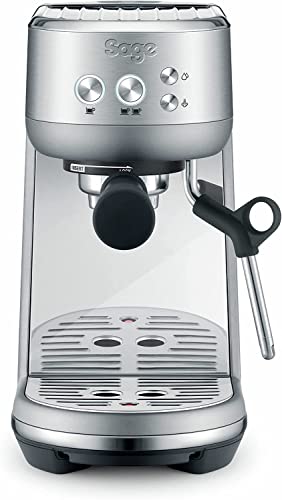How Does Machine Espresso Work?
Machine espresso uses precision pressure and incredible filter technology to produce the perfect cup of coffee. How does it work exactly?
To make espresso, hot water is pushed under pressure through finely ground coffee. The process is similar to making drip coffee. However, the pressure is the major difference.
The Group Head
As the name suggests, the group head is where you place your portafilter while making espresso. It is responsible for dispersing the water into the portafilter and controlling the pressure of the resulting extraction. There are several different types of group heads, each with their own advantages and drawbacks. Some are designed to provide the stability of temperature while some are specifically designed to handle pre-infusion. Others are built to control the lever. best budget espresso machine contain a variety of features, such as the E61, which is the most popular choice among baristas because of its ability to provide multiple benefits in a single package.
As you can see in the above photo the group head comes with many notches in which you can put your portafilter, then twist it with your hands to lock it in. A gasket of rubber is situated inside the notches, which helps create a seal while you insert your portafilter. The notches on the head allow for a precise positioning of the portafilter which is crucial for a consistent extraction.
The group head does not just allow you to place your portafilter easily however it also keeps the same temperature. This is accomplished by cycling hot water around the portafilter, and through the brew-basket to ensure that the temperature is at the right level for extraction. It is crucial to keep in mind that even a slight difference can make the difference between a good and great espresso.
The Pump
The motorized pumps in espresso machines that rotate provide the nine atmospheric bar pressure that is required for espresso extraction. This differs from manual piston machines that use a lever. This pressure is generated by pumping water through a heat-exchanger and then through the ground coffee.
Pumps tend to be less expensive than piston-driven machines, and they tend to last longer, although both types of machines may be damaged by excessive use and inadequate cleaning. Pumps are also more complex mechanically, and can add to the cost of even most basic models.

Certain espresso machines eliminate the pump completely and make use of steam pressure to make espresso. This can cause over-extraction because the boiler that produces steam also heats the water to boil. Additionally the machines often have to restore their pressure between cups, which requires time and energy.
Many espresso machines utilize the rotary or vibration pump, with a vibrating model that uses a vibrating disc to create pressure, and the rotary model pushing hot water through the grounds at high speed. Both machines produce great espresso, however rotary machines are quieter, more durable and less likely to break down.
The Boiler
The boiler is what is used to heat the water to the right temperature to extract. The steam that is produced reaches the portafilter that contains the ground espresso coffee and is then pumped down into the cup. During this process the steam causes enough pressure to push the grounds of coffee through. This results in a crema on the top of the espresso. This is a hallmark of a great espresso.
There are three types of espresso machines, each with distinct pumps and brew temperature. There are various ways that the brew can be controlled and the dimensions of the cup the maker can create.
The earliest espresso machines were steam-based. They employed a single boiler to make both brew and steam, however the pressure they were able to produce was very low - just two bars of atmospheric pressure maximum. This resulted in the coffee tasting bitter and burnt. This is why Milanese makers Luigi Bezzerra and Desiderio Pavoni developed the modern espresso machine.
The most well-known espresso machine is a semiautomatic one with an electric pump. When people think of espresso machines, they think of these machines. With a semi-automatic machine, you need to grind the beans and then tamp them by hand. The pump controls the flow of water and pressure. This is an excellent compromise between human touch and the mechanised accuracy.
The Filter
Typically, espresso machines use filters to separate the grounds of coffee when they pass through the hot water. The filter is also a vital element of the temperature control system as it keeps the machine from overheating.
A filter also improves flavor because it allows for the beans to flower for a longer period of time. This helps the beans to release their flavors and provides an opportunity for a better extraction.
However, it is important to keep in mind that even a high-quality filter can produce a bad cup of coffee, because the quality of the beans and extraction is vital.
It's in this area that the magic occurs. This is what makes espresso taste so good. The grouphead (also known as the brewhead) is where you place the portafilter, which is the thingy used to place the grounds of your coffee into when making espresso.
Steam-driven espresso machines use hot water that is heated in an airtight container to produce steam. The steam then pushes hot water through the grounds of coffee under high pressure. They are less expensive and are easier for the user to maintain than pumps-driven models. However, they are limited in their ability to provide the ideal brewing conditions, since they are only operating at 1-1.5 bars of pressure. However, the perfect shot requires 9-10 bars.
In recent years, compressed air-pump-driven espresso machines have become more popular. They utilize an air compressor to force hot water into the grounds and are significantly more portable than steam-driven electric machines.
